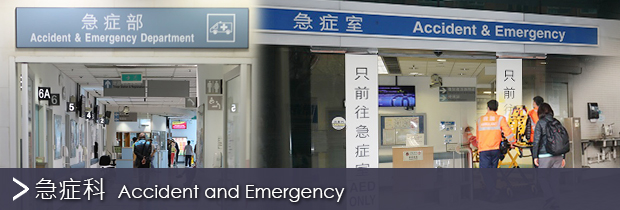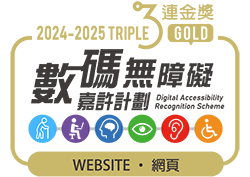Introduction
Pok Oi Hospital is 1 of the 18 public hospitals under the Hospital Authority that provides Accident & Emergency (A&E) Services.
We provide consultation and treatment to patients requiring emergency service. Patients who do not require emergency attendance should seek medical treatment in public or private clinics.
In order that patients are provided with timely treatment, all patients attending A&E Department are subject to Triage on arrival. Whenever a patient registers for treatment, the triage nurse classifies the patient as requiring critical, emergency, urgent, semi-urgent or non-urgent treatment. Priority for treatment is given to the patient according to his condition not according to his time of registration.
Triage System
What is Triage? Triage - French word meaning "to sort" or "to choose". It is a process of setting priorities for treatments for a patient or a group of A&E patients. The sorting of patients into priority categories is performed by an experienced registered nursing staff. They use systemic and scientific methods to assess patients' condition to interpret the clinical features and then exercise interventions in the early phase to prevent deterioration and death.
How does it work?
The triage system has already been implemented in all A&E Departments to help determine the relative priority of individual patient needs. Emergency patients will be given immediate treatment, while those with non-acute symptoms should expect a longer waiting time.
When patients arrive at the A&E Department, they will first be assessed by an experienced and specially trained triage nurse according to the severity and nature of their medical conditions, and priority will be given to urgent cases.
Patients are divided into five categories according to their medical condition -
- critical
- emergency
- urgent
- semi-urgent
- non-urgent
For critical patients who are dying or in life-threatening condition, they are accorded top priority and attended immediately by a team of medical and nursing staff without waiting.
Objectives of Triage
- To ensure early recognition and assessment of patients' condition and prioritize the treatment according to severity of the conditions
- To reduce unnecessary delay of treatment
- To give brief First-Aid advice
- To initiate immediate diagnostic tests, intervention and nursing treatment
- To allow effective utilization of staff and resources by allocating patients to appropriate treatment area according to their conditions
- To improve patient-staff relationship and departmental image through greeting and communication during process of triage
- To promote public relationship by immediate interview with patient
- To enable direct communication with pre-hospital care provider
- To provide documentation patients' condition, time of triage and preliminary treatment given in triage
- To provide staff training and decision making
Fee
Triage is one of the essential services provided by A&E Department. Patients who decide not to use the service after triage service before consultation are required to pay the A&E charges.
Patient flow
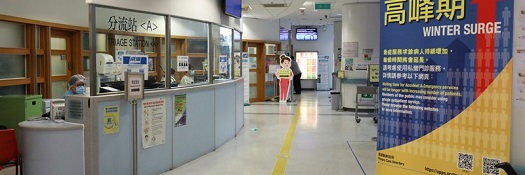
At Triage
- Registration will be needed before Triage. Triage nurse will assess and assign patient to various categories
- A bracelet for identification would be prepared for all A&E patients in POH. The bracelet will be removed when patient leaves.
- The waiting time will depend on triage category. The more urgent cases will be attended to first
- Patient can approach nursing staff for reassessment if condition changes.
- ONLY one relative, friend or escort personnel, is allowed to accompany patient during consultation
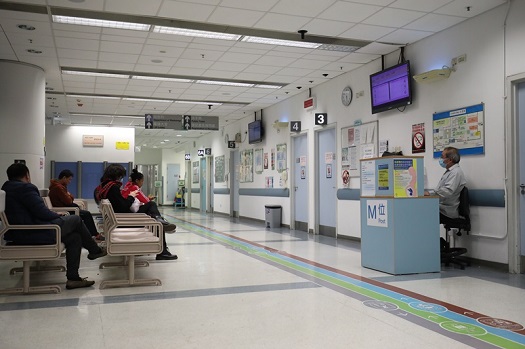
After Consultation
- After medical consultation, patient may have to wait for nursing treatment (such as injection, dressing, suturing) or investigation results (such as X ray, blood tests) if required before discharge.
- If observation is needed, patient will be monitored in designated observation area.
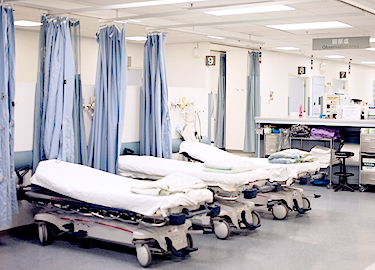
Discharge
- Patient please check the name on all documents (sick leave, prescription and referrals) given before leaving the department.
- Opening hours of pharmacy: Monday to Sunday and Public Holidays, 24 hours Service (Service Break: 03:00 - 04:00)
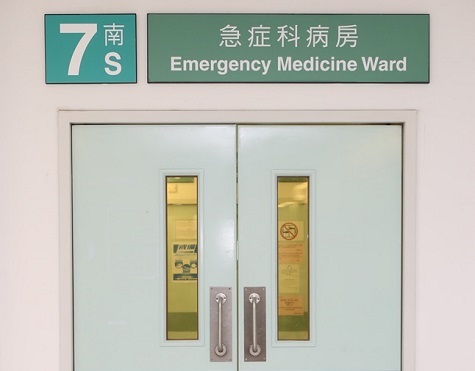
Emergency Medicine Ward
- EMW (Emergency Medicine Ward) provides short term in-patient monitoring and treatment services.
- If necessary, patient may be transferred to other specialty ward of this hospital or other hospital for further treatment.
- Visiting hours of EMW: 12:00 noon to 1:00pm and 5:30pm to 8:00pm.
Admission
- Patient may be transferred to other hospitals, mainly to Tuen Mun hospital, for definitive treatment which is not available in Pok Oi hospital.
Service hours
We provide emergency medical service on 24-hour basis.
Contact
| Address: | G/F, Pok Oi Hospital, Au Tau, Yuen Long, New Territories, Hong Kong |
|---|---|
| Telephone: | 2486 8000 |


